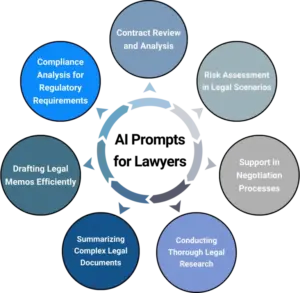Introduction
Imagine a well-organized kitchen where all your ingredients, utensils, and appliances are easily accessible, allowing you to whip up a delicious meal effortlessly. Just like a kitchen that runs smoothly, businesses also rely on efficient systems to manage their contracts and commercial relationships. This is where Contract Lifecycle Management (CLM) comes into play. In today’s fast-paced and ever-changing business landscape, the importance of CLM cannot be overstated. It acts as the backbone of contract management, enabling organizations to streamline processes, mitigate risks, and drive business growth. This article will focus on upcoming trends in CLM according to the Forrester Wave Report 2023.
Upcoming trends in the CLM market to watch out for
The business landscape is undergoing a significant transformation, and digitalization has become a necessity rather than an option for companies. Global crises have further emphasized the need for firms to modernize how they manage their business and commercial activities. In this context, Contract Lifecycle Management (CLM) technology has evolved beyond mere efficiency and speed. Today, it is essential to gain critical insights and strategic value from CLM solutions. Customers now expect CLM to support contracts throughout their entire lifecycle while also offering AI-powered analytics, integrations, and flexible workflows.
Features to evaluate in CLM software based on the trends (2023)
To meet these evolving demands, CLM customers should focus on providers that offer the following capabilities:
-
Support for Pre- and Post-Signature Processes
CLM is more than just a digital contract library and template creation tool. The contract management process doesn’t end once the contract is signed. Robust CLM solutions streamline contract creation, accelerate negotiation and execution, ensure contract compliance, and enable business and commercial activities. These solutions provide insights, analysis, and visibility into the agreed-upon terms, delivering added value beyond the initial contract signing.
-
Meeting the Needs of the Entire Organization
Technology consolidation has become a strategic move for firms embracing digital transformation while navigating the complexities of today’s economics, geopolitics, and pace of innovation. Forward-thinking companies leverage their existing technologies, consolidate where appropriate, and establish pathways for enterprise-wide efficiency and collaboration. Many organizations are now standardizing their contracts on a single CLM provider that caters to the contracting needs of various business functions, including procurement, sales, and HR. This approach ensures consistent processes and facilitates timely and actionable intelligence for finance, legal and compliance, security, and risk departments.
-
Leveraging AI for Workflow Optimization
For the past few years, AI capabilities have been a requirement in CLM Requests for Proposal (RFP) documents. However, the full potential of AI has often been underutilized after implementation. The rapid advancement of AI, especially in the legal technology domain, has urged CLM vendors to enhance their offerings. Some providers have already incorporated AI in innovative ways, such as voice-enabled contract search, smart clause recommendations based on past contracts with specific counterparties, auto-redlining, and sentiment analysis on language changes. Leveraging AI-driven workflows can significantly enhance efficiency and accuracy in contract management processes.
-
Seamless Integration with Upstream Apps and Downstream Systems
CLM integrations benefit both buy-side and sell-side contracting professionals. Native integrations with various upstream applications, such as sourcing tools on the buy side and CRM products on the sell side, have become the norm in the market. Additionally, CLM providers are increasingly integrating with invoicing and financial transaction systems downstream to ensure seamless execution of contracted obligations, billing, and timely payments.
The current trends in CLM highlight the increasing importance of digitalizing commercial relationships. CLM solutions must go beyond traditional functionalities to offer strategic value, comprehensive support throughout the contract lifecycle, AI-driven workflows, and seamless integrations. By embracing these trends, businesses can optimize their contract management processes, enhance collaboration, and navigate the evolving digital landscape with confidence.
Is the CLM market changing? What are the new Trends?

Over the past two years, the landscape of Contract Lifecycle Management (CLM) has experienced significant transformations driven by global disruption, external factors, and critical risk events. These changes have propelled CLM towards innovation, although they have also created barriers to adoption. Let’s explore the key areas where these shifts are most notable.
-
Flexible and Easy-to-Use CLM Platforms:
CLM has undergone a remarkable evolution, now offering flexible and user-friendly platforms. New market entrants have introduced no-code, multi-tenant software-as-a-service (SaaS) solutions that enhance the interoperability and collaboration capabilities of CLM across various business functions. This enables companies to scale their use of CLM over time. Traditional vendors must enhance usability, streamline upgrades, and simplify deployment to remain competitive in this changing landscape.
-
Realizing the Strategic Value of CLM:
While CLM holds strategic value for businesses, vendors must assist customers in realizing this potential. When fully utilized, CLM can drive enterprise value and foster business growth. Customers seek this strategic value to justify their budget allocations. However, many vendors in the market still focus on promoting efficiency gains through contract automation. Vendors that fail to grasp and communicate the broader value proposition of CLM will face challenges in competing with their counterparts.
-
Convergence of Buy-Side and Sell-Side CLM Capabilities:
The convergence of buy-side and sell-side CLM capabilities is disrupting the market. Increasingly, organizations are adopting a single CLM platform to support both buying and selling contracts. This trend helps reduce technology debt, consolidate vendors, and extract more value from investments made in CLM solutions. The unified approach streamlines processes and provides a holistic view of contract management across the organization.
-
AI-Driven Digitalization of Legal Operations:
The digitalization of legal operations generates vast amounts of data that cannot be efficiently handled through automation alone. In the context of CLM, artificial intelligence (AI) and machine learning (ML) capabilities have become indispensable. These technologies are no longer considered optional but necessary to address challenges such as contract document e-discovery, deduplication, clause extraction, and intelligent recommendations based on contract types. By leveraging AI and ML, CLM can significantly enhance efficiency and accuracy in managing contracts.
The CLM market is experiencing dynamic changes driven by four key market dynamics. The availability of flexible and user-friendly platforms, the need to realize the strategic value of CLM, the convergence of buy-side and sell-side capabilities, and the integration of AI in legal operations are shaping the future of CLM. Staying abreast of these trends and adopting innovative CLM solutions will enable businesses to effectively navigate the evolving landscape and optimize their contract management processes.
Overall,
In this article, we have explored the current trends in the CLM market, highlighting their significance in accelerating the digitalization of commercial relationships. By staying informed and embracing these trends, businesses can stay ahead of the competition, drive growth, and optimize their contract management processes. For more insights on CLM and related topics, check out our previous blogs. We aim to provide valuable information and practical best practices tailored to the needs of our target audience.
Remember, effective CLM is not just a luxury; it is a necessity for businesses to thrive in today’s competitive landscape. With Volody’s feature-rich AI CLM solution, we empower organizations to take control of their contracts and unlock their full potential.





